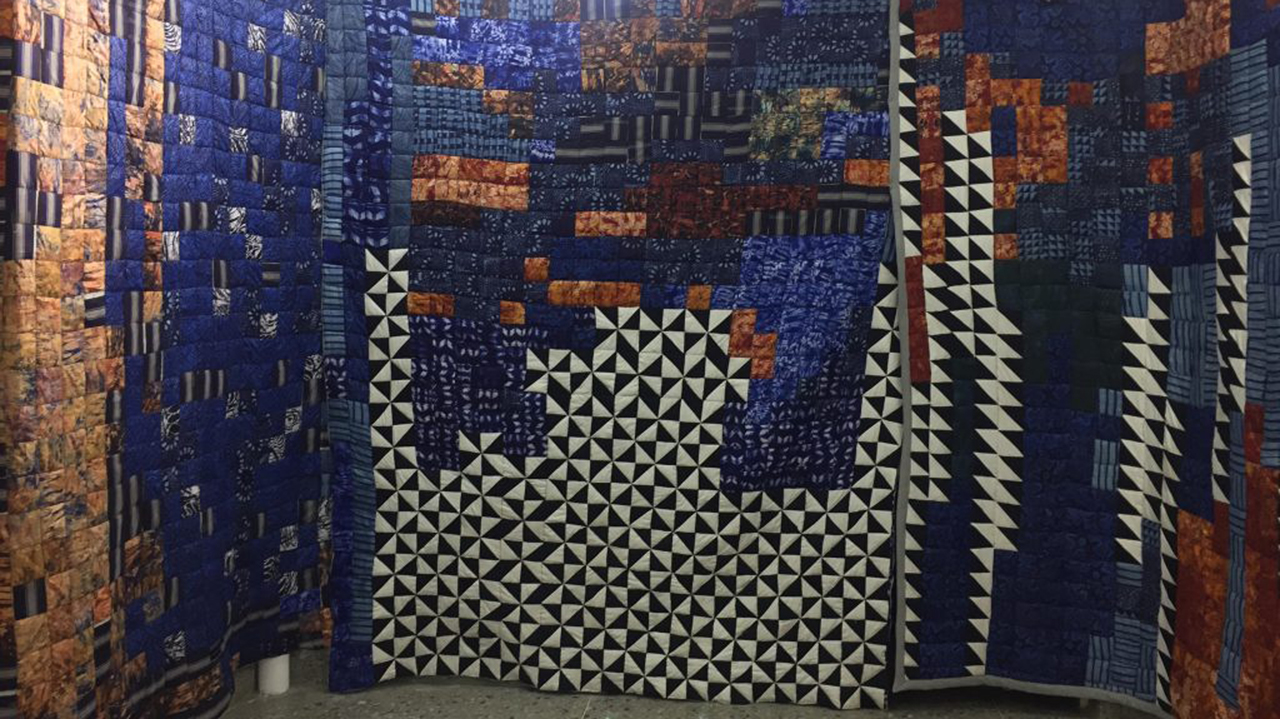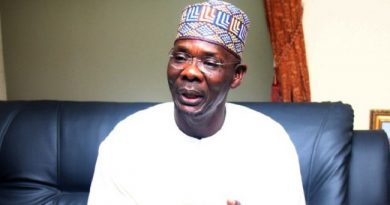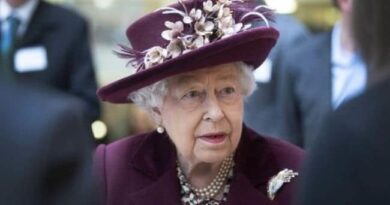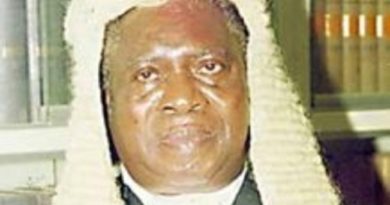‘I’m Worried 30 Years After, Cultural Policy Is Still In Legislative Limbo’
Before any response to the main question, one would like to recall that the struggle for independence was driven, among other factors, by the spirit of cultural nationalism. It had to do with our identity, dignity, and integrity as Africans; our values and civilization, which were not to be subordinated to those of other members of the global community.
Quite a number of the protagonists of independence struggles were creative individuals in their own rights. To mention just a few, Azikiwe and Osadebay in Nigeria were men of letters.
Ogunde, Achebe, Soyinka, and others as liberators, produced works that addressed the attempted denigration of the African culture and personality by the colonial predators. This was how far the partnership between members of the community of artists and politicians manifested in attaining the singular political objective of bringing about a sovereign state called Nigeria.
Thereafter, the major artists turned their mirrors inwards to scrutinize, evaluate and when necessary criticize the new political elite. At that point, the romance ended.
When the artist steps beyond the role of an entertainer or mere praise-singer massaging the ego of members of the political elite to that of a critic, he or she becomes an object of suspicion or victimization by the latter.
Based on this turn of relationship, art as a serious form of intellectual engagement has not been an attractive venture for the average Nigerian politician since the attainment of independence.
 Peju Layiwola, Oje Market Day (2018-2019), Fabric Patchwork. Courtesy TSA. Layiwola is one.
Peju Layiwola, Oje Market Day (2018-2019), Fabric Patchwork. Courtesy TSA. Layiwola is one.The Departments of Literature and Language Arts, Schools of Mass Communication, Theatre Departments, Film Institutes, Colleges of Fine and Applied Arts and others have performed quite creditably by turning out credible professionals.
But a major setback, which practitioners try to overcome by sheer doggedness, is the lack of an enabling environment to practice. When capacity is built and facilities are not available to advance on the skill, productivity diminishes. So, I believe that the government should turn a new leaf from our experiences in the past and connect with the arts beyond lip service.
Most of the achievements of practitioners in the creative sector since the attainment of independence, both locally and internationally, are direct results of a private individual or group efforts. I said most because there could be some measure of successes, recorded by artists here or there, that are derived directly from government initiatives. But they are very few. Perhaps the intervention funds that are still blowing in the wind could indeed bring about a windfall. It’s a wait and sees affair.
Can you assess the arts and culture sector in Nigeria these past 59 years considering that you were a member of the Panel on Proposed Implementation Strategies for the Cultural Policy 1988 which provided for the National Endowment for the Arts to be established? Till now, there is still no legislative backing for the idea.
This is a double-barreled question. But let me start with the second. The entire Cultural Policy of 1988 and the review, which followed during this Fourth Republic, cannot — as at this moment — be cited legally.
Some of us refer to it gleefully in our advocacy pronouncements and strategic communication because the 1988 cultural policy is a rich material described at that time as one of the best in the world. But we know that none of its provisions can be cited in a legal process. So, you can understand the wait-and-see attitude that I concluded in the last part of this conversation.
Thirty years and a document that is expected to turn the fortune of the cultural sector around for the better is still in a state of legislative limbo. Neither the National Endowment for the Arts nor the National Academy of the Arts nor any such brilliant ideas articulated by culture icons and scholars can be implemented if the government maintains a disconnect with the essential demands of the sector.
Fela came and broke rules, infusing the jazz and avant-garde spirit into high life until he eventually evolved a unique musical genre of his own – afrobeat- with which he dominated the scene as a world-class icon and genius. Between the era of the old high lifers and now, cultural diversity in Nigeria has been a major factor behind the richness of the musical acts.
The country’s huge population has also been a defining factor on the massive outreach of Nigerian music as a most poignant aspect of our pop-culture just as the cosmopolitan disposition and taste of the average Nigerian is most supportive of the promotion of our brands of music beyond Nigerian boundaries. What more; Nigerian musicians also love to experiment with foreign idioms to evolve an assortment of fusion.
The new generation of the 21st century has made great success in their careers in this regard, especially now that technology has shrunken the world to a mere global village. Be that as it may, Fela stands out among other musicians of post-independent Nigeria as the most socially conscious and Ideologically committed, the type that you encounter more in the literary community.
I had earlier spoken about Achebe with a subtle reference to his literary assail against the misrepresentation of Africa and Africans by western writers. I’m talking about Achebe’s Things Fall Apart against Joseph Conrad’s Heart of Darkness.
Achebe was one of those who turned the mirror inwards, exposing through fiction, the untoward situation of the political economy of the new state, which even assumes a prophetic dimension in novels like A Man of the People and No Longer at Ease. J.P. Clark’s The Raft is no less prognostic. Somewhat symbolic of a country adrift, it has remained relevant throughout this post-independence era.
The mass of literary works turned out after the civil war says a lot about the tragic state of a country that is, indeed, adrift.
Corruption and the struggle of women in a conservative, patrilineal society, class struggle, especially from a Marxist perspective, are dominant themes of the period under review.
And you want to celebrate the emergence of new, trail-blazing writers like Ben Okri, Helon Habila, Chimamanda Adichie, among others, on the Nigerian literary scene, coming after the exploits of global icons like Osofisan, Osundare, Iyayi, Zulu Sofola, Buchi Emecheta, to mention just a few. You also want to celebrate the efforts made through various promotional programmes like the CORA organised Lagos Book and Arts Festival, the annual Macmillan Literary Night (now rested), workshops for the promotion of reading culture, literary prizes, performance poetry productions, among others. There’s certainly a lot to say for literature, but this medium has limited space. So, let’s visit the theatre.
In the beginning, the theatre did cut the umbilical cord of the baby-country with the critical, unflattering and prophetic blade of Soyinka’s A Dance of the Forests.
The dramatic treat which the political triumvirates expected from Soyinka for the celebration of the independence was probably a melodramatic theatrical excursion laced with heroic staves. But they got more than what they bargained for from the radical dramatist of all times.
It was a message about the uncertainty that the newly independent African states were likely to encounter because, in the eagerness of the nationalists to enjoy the spoils of public office after the exit of the colonialists, they failed to prepare themselves for the real challenges of nation-building.
The consequence, among others, is that the nationalists are confronted with a new African state dramatically symbolised by Soyinka as a Half-born Child. Most African states, including Nigeria, have remained in that state of uncertainty with strifes, wars, and social disequilibrium as co-passengers since the attainment of independence.
I have mentioned two examples of quintessential theatre expressions reckoned within the history of the discipline as models of socially conscious, activistic drama and theatre in the post-independence national repertory.
There are a lot of others with individual marks of distinction who have made remarkable contributions to drama and theatre. The legends of the Yoruba Travelling Theatre – Hubert Ogunde, Duro Ladipo, Kola Ogunmola and Moses Olaiya (Baba Sala) – are thus acknowledged.
So too must we acknowledge the works of Femi Osofisan, Bode Sowande, Ahmed Yerima, Esiaba Irobi, Ifeoma Fafunwa, Onukaba Adinoyi-Ojo and others in drawing attention to critical issues affecting individuals and groups, sensitizing members of the society on remedial processes or as change agents?
Personally, in spite of the hectic time theatre artistes in Nigeria have gone through over the decades, one is very hopeful that happier days will come. You now have Producer/ Directors like Ropo Ewenla and Toyin Osinaike ensuring that new plays are produced and presented regularly at particular venues.
Young, assiduous thespians like Segun Adefila, Kenneth Uphopho, Toju Ejoh, and Joshua Alabi are also serving members of the public with quality performances. This is apart from Bolanle Austin Peters bold incursion unto the stage in recent times with her musicals – SARO, WAKA, et cetera.
It is also encouraging that a particular government in Lagos State, that of the former Governor Ambode responded favorably to our advocacy on Community Theatres by establishing four in the state for a start.
We certainly need more, a mini of 57, and I hope the new Governor, Sanwo-Olu, will not neglect the theatre culture in this area, especially for its job and wealth creation advantages.
But how about promotion? Exhibitions are mounted virtually all year-round. But we can spot a few models. Evolution Of Nigerian Art, organised under the supervision of Frank Aig-Imoukhuede by the National Council for Arts and Culture in the 1980s was showcased around the world.
That’s something of an ambitious scale that needs to be organized from time to time both as a reference point and as a marketing project. And talking about marketing, the National Gallery of Art, during the tenure of Joe Musa as the Director-General organised the Nigerian Art Expo, which galvanized local patronage for artworks in a focused and businesslike manner. What problems we always have with this kind of bar-raising initiative is that, sooner or later, they are terminated on the altar of political vested interests. This explains why the alternative platforms are common in the artworld’s entire value chain.
Have the politicians been able to convince the general polity that they are better than the military, which they replaced? Has democracy really worked for the people?
If you are talking about arts and culture administration, I think the military, especially in the eventually defamed Babangida era, performed better than any government of the Fourth Republic. But that doesn’t mean I subscribe to military governance by any stretch of the imagination.
One only testifies that most of the specialised parastatals we have now, such as the Nigerian Copyright Commission, National Troupe, National Gallery of Art and major policy directions like the Cultural Policy, were products of the military era.
The question of whether or not democracy has worked for the people is tricky. My answer is that it must work, by FIRE, if that is what it takes or if the jail will be filled to the brim and spill over.
I’m really worried when a government becomes jittery over dissent, which is an essential factor in democracy. The moment this begins to happen omens gather. But whether we learn from the past or not, this democracy must work.
The state of insecurity in Nigeria, generally, is of a complex dimension. In some cases, it manifests as sheer criminality such as robbery and kidnapping. The latter also branches into kidnapping for ritual purposes and kidnapping for ransom.
There’s also insecurity caused by the pockets of resistance vanguards among people who suffer some form of oppression or another. And there is insecurity deriving from ethnoreligious expansionist agenda.
I believe the latter is what is causing very serious concern for the Yoruba people and, indeed, the entire Southern part of the country and the Middle-Belt. We seem not to have learned any lesson from history, that is the aggressors, self-serving local collaborators, and lackadaisical populace.
I don’t want to say much for now than to refer you to the chain of events related to Hubert Ogunde’s Yoruba Ronu, which I spoke about earlier on. Those who fail to learn from the mistake of history are bound to repeat it.
Having come thus far on the rocky road to 59, in what direction should Nigeria move to get it smooth?
I believe that restructuring the polity will help to give all sections of the country a sense of dignity and self-esteem with the assurance that they can maximize their potentials in the development of their human and material resources.
If anyone thinks he has a better strategy of proving old, tragically untenable points for Nigeria of his or her personal fantasy, let him or she go ahead. Otherwise, let us face the future with courage, restructure and stop moving in circles.
Talk of economic resurgence or fragmentation, a situation whereby each geopolitical zone wants to maximize its opportunities as you said. But do you think this augurs well for a united Nigeria?
United Nigeria. You see, I just laugh when people say that the unity of Nigeria is not negotiable. This is something like the last straw or the last gasp for those who love to invoke the grand illusion of unity to exploit the resources of the country irrespective of where they are situated.
Is it not clear that in reality and in view of the adversities being experienced, Nigeria is already negotiating away her unity. I keep wondering if those who are harping on this non-negotiable clause think they are talking to infants. It is pure brain laziness disguised as the aristocracy of knowledge.
Predict a future for the arts in the country
I don’t know about others, but as a creative artist, I like to create not in a state of panic but in a state of peace. If pressure comes and we have to create we do create.
But I long for a Nigeria with less tension, where there is mutual respect among the people, where artists can indulge their romantic sensibilities on the lawns, in the wild, the mountains, valleys, and creeks without the fear of being kidnapped.
I look forward to when freedom of expression with being so manifest that you will not be afraid of the word, ‘Revolution’, when you can throw satiric jibes at the tower of power and the president will buy his own copy to read and the people do likewise. I fancy a future habitat where there’s a theatre or cinema to attend within a walking distance.
I like to see elites organizing salons, discussing and buying works of art. I’m dreaming of when the Nigerian Kitchen and fashion house will be found in every nook and corner of the cosmopolitan world.
I am waiting for that day, God willing, when Nigerian acts in music, drama, the dance will shuttle the globe in unbroken frequencies and return home to the glamour of big festivals. I’m waiting for the day.




